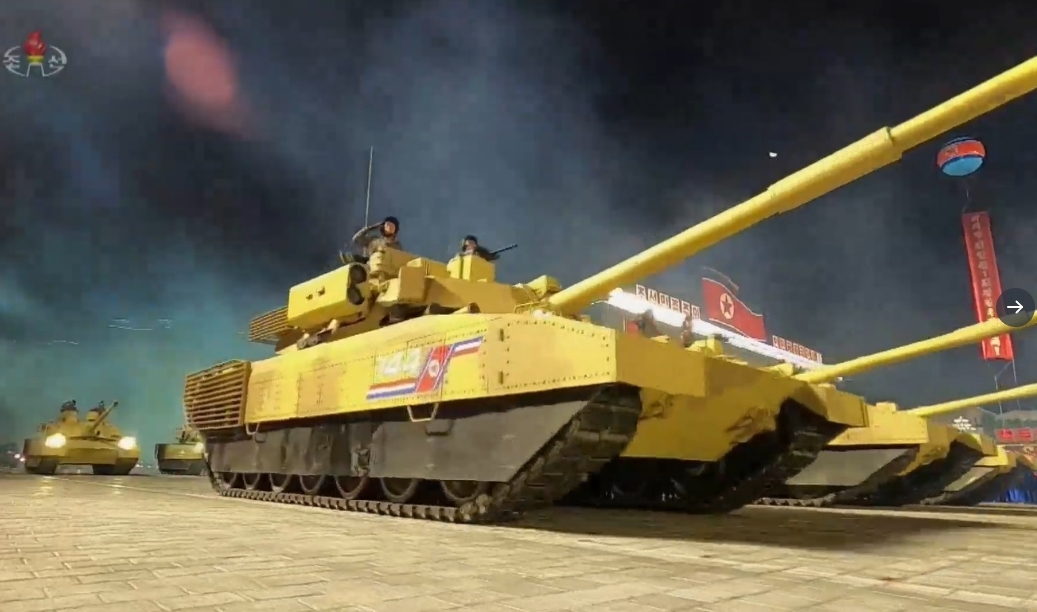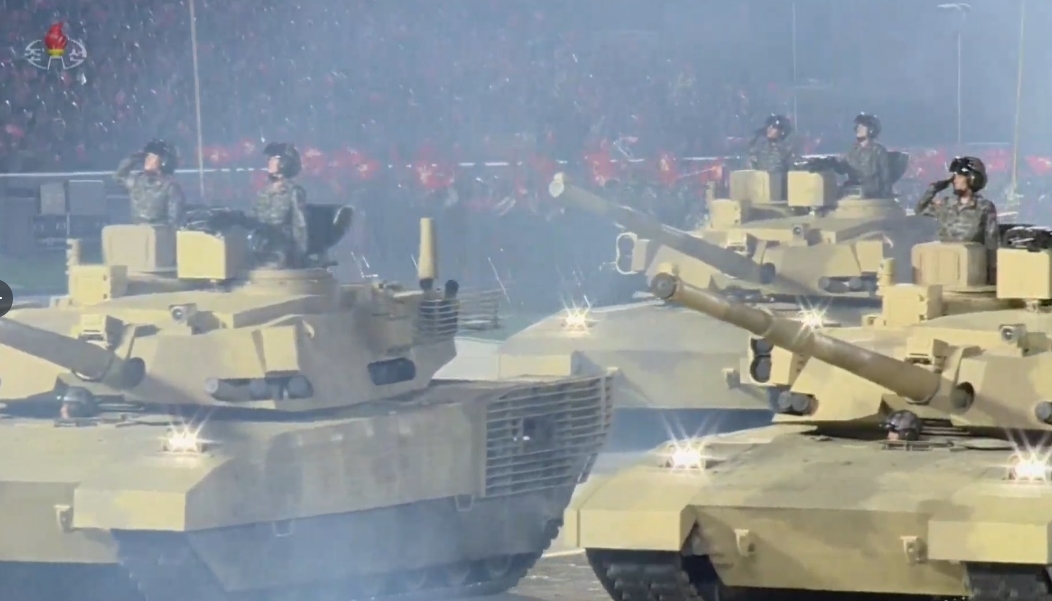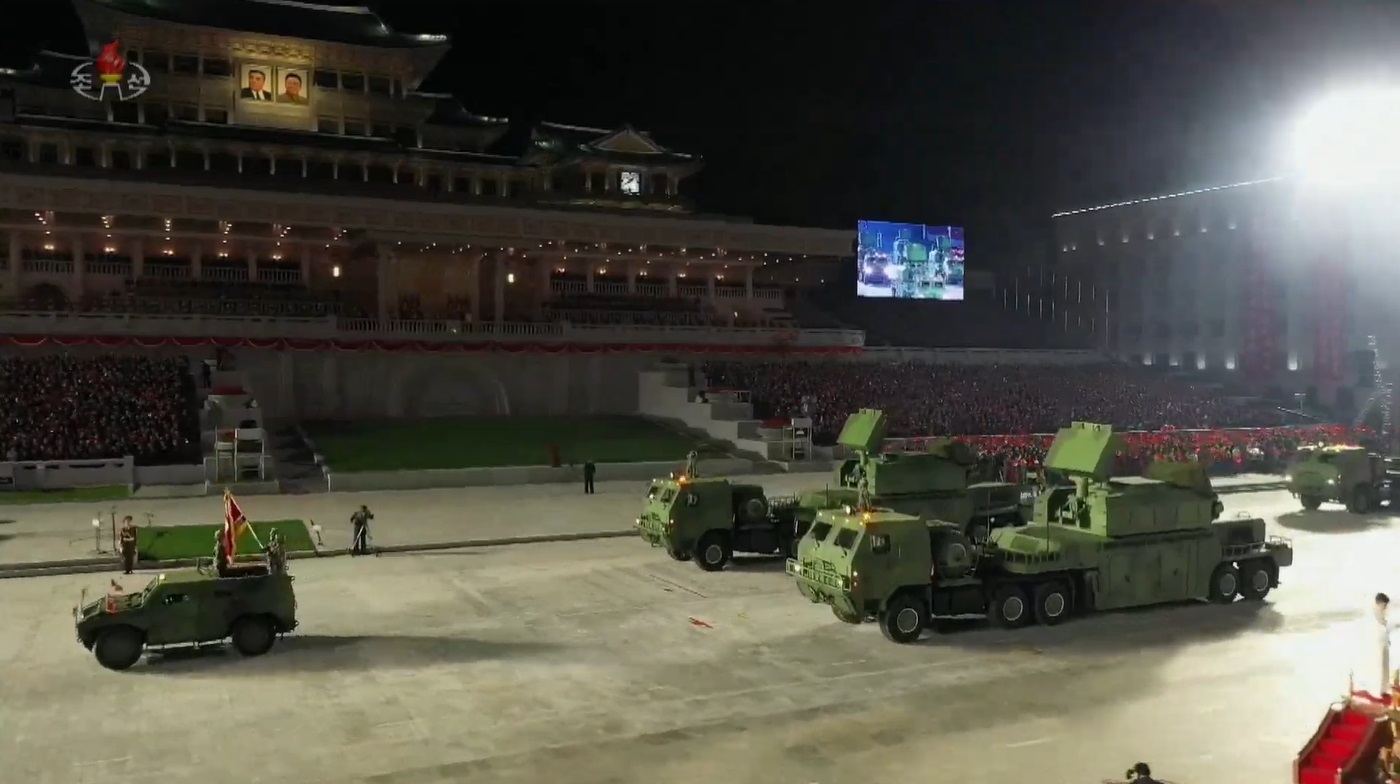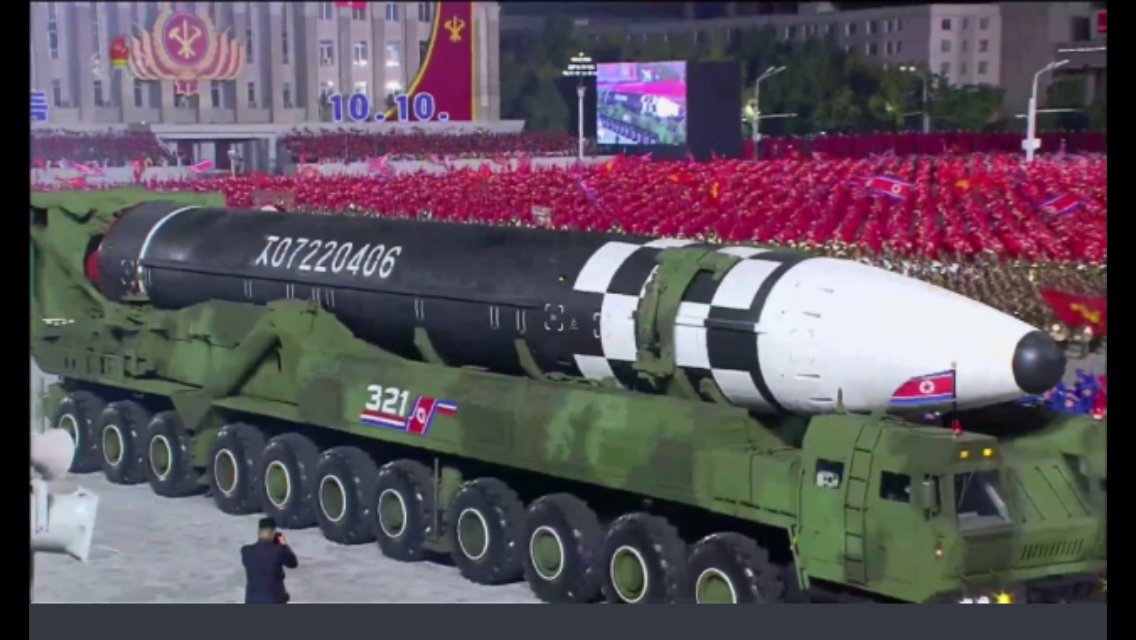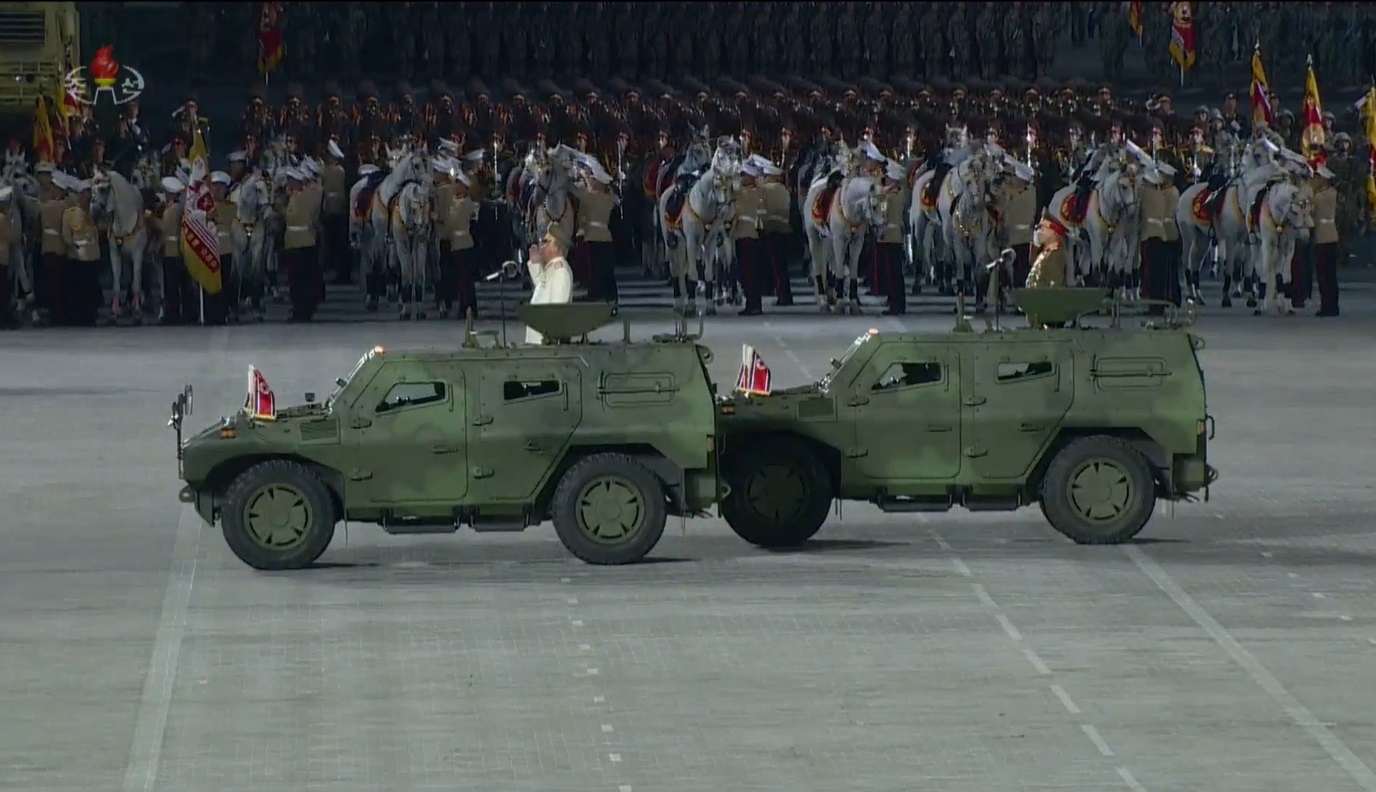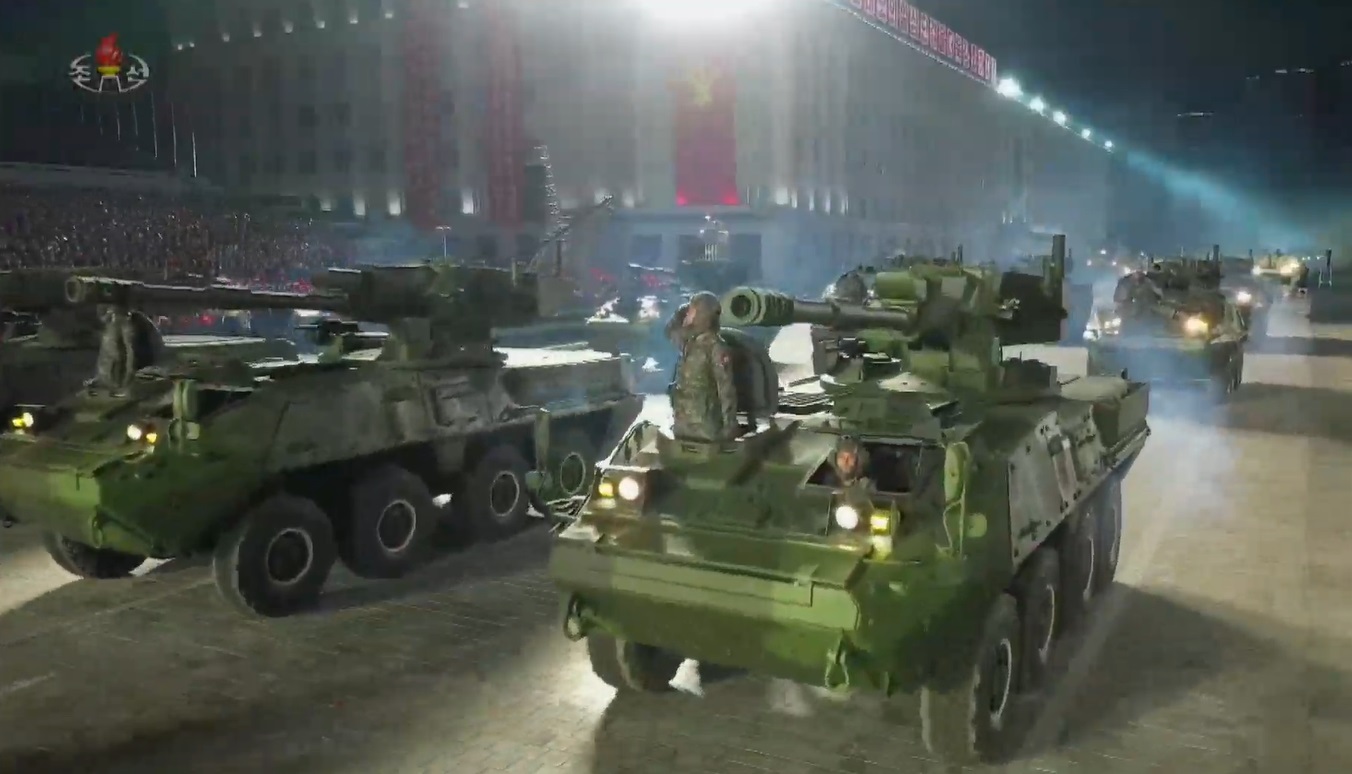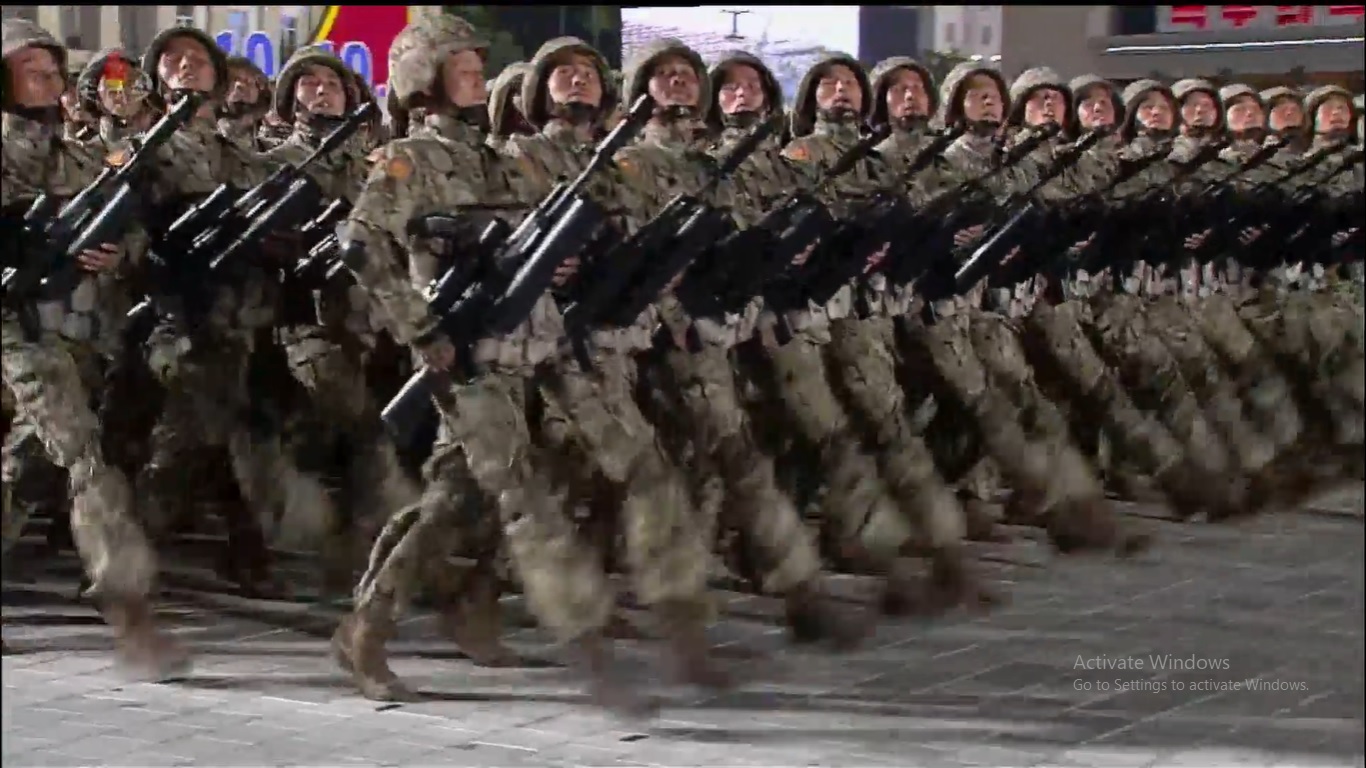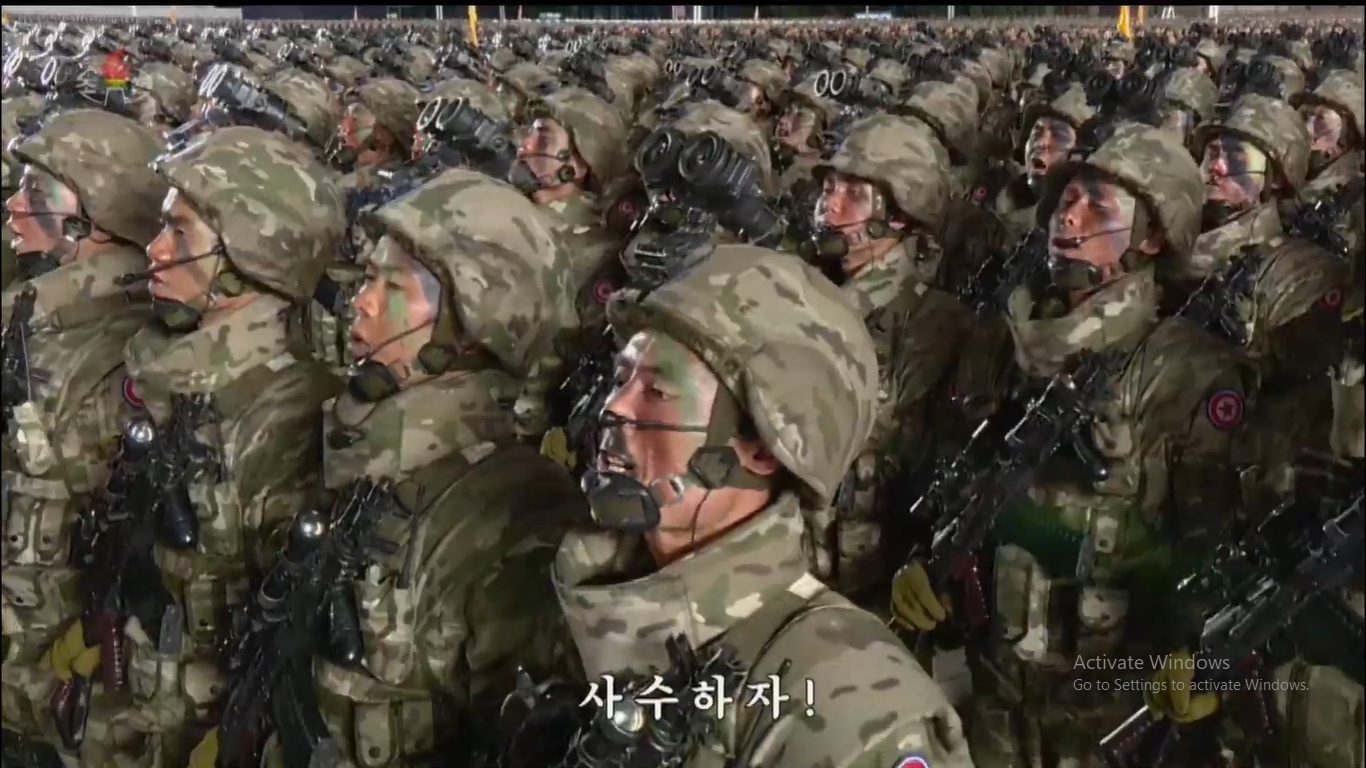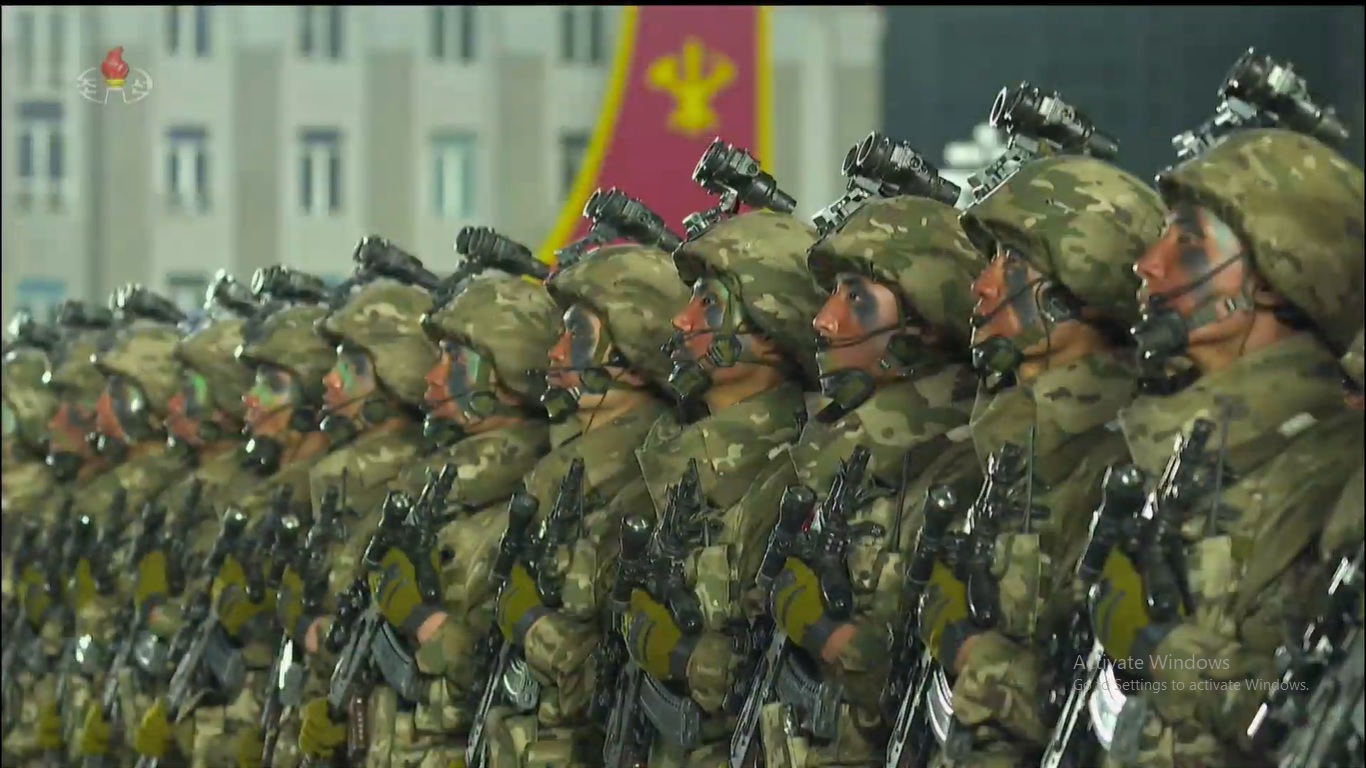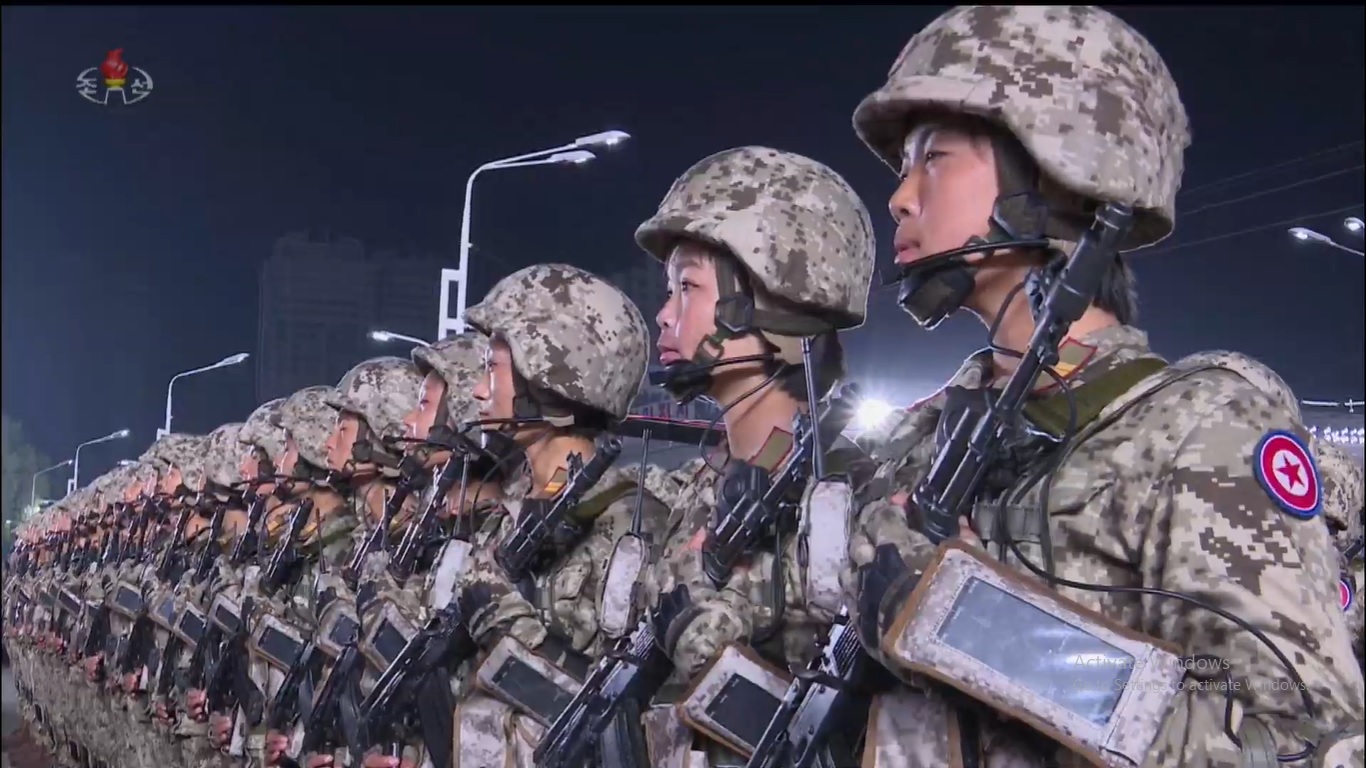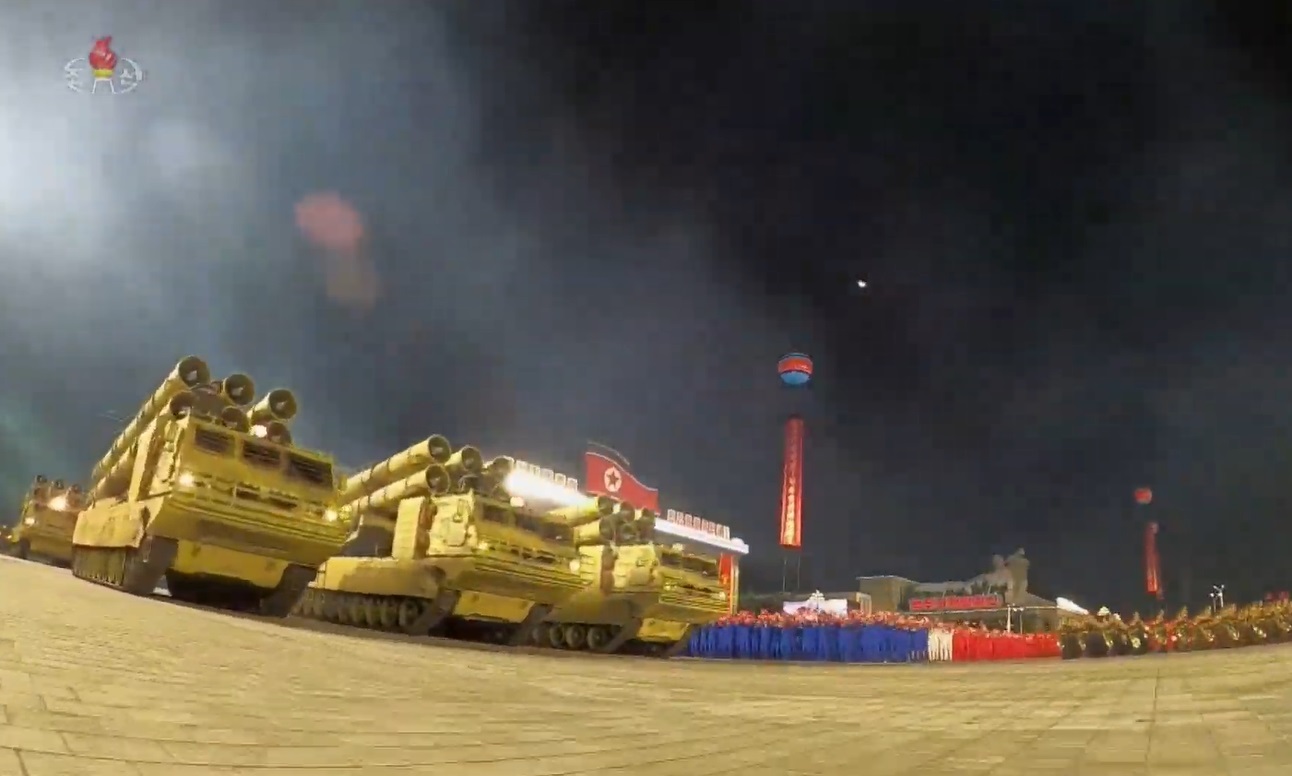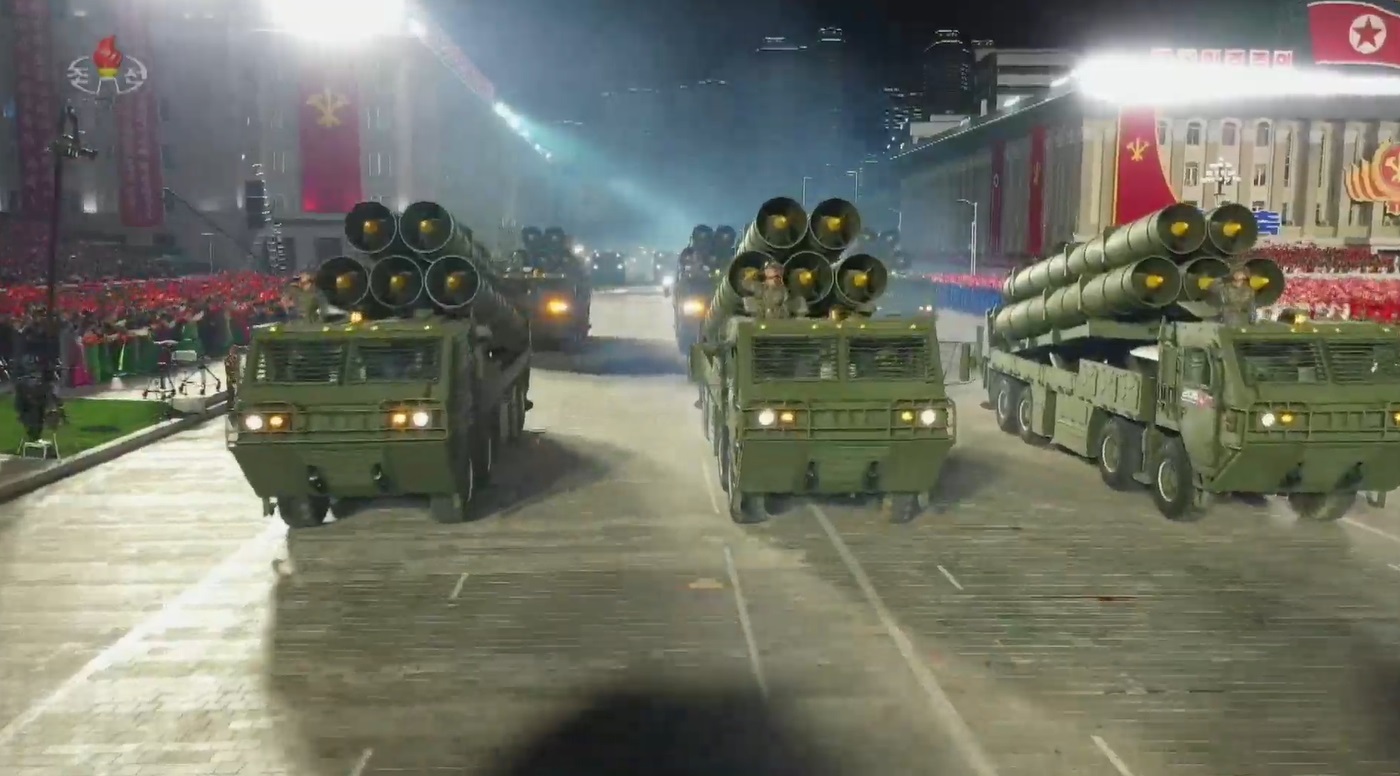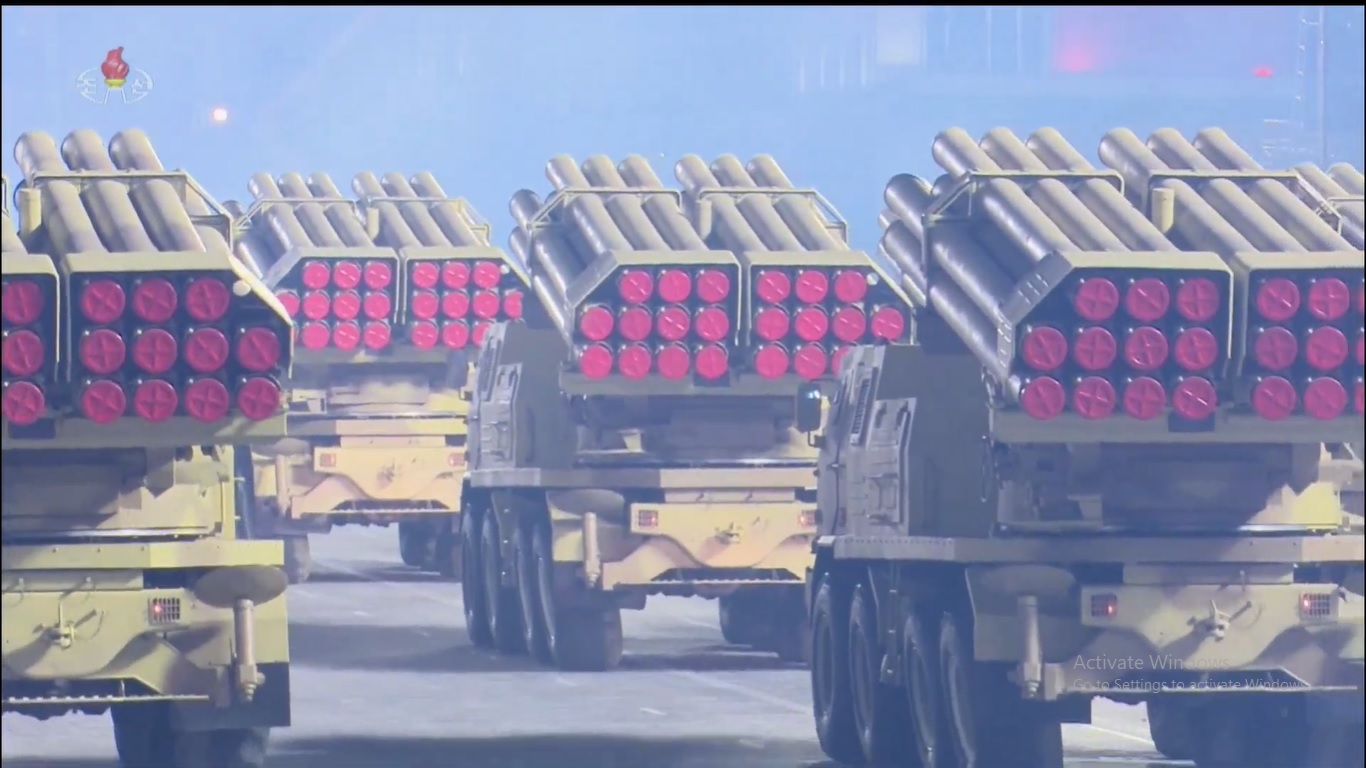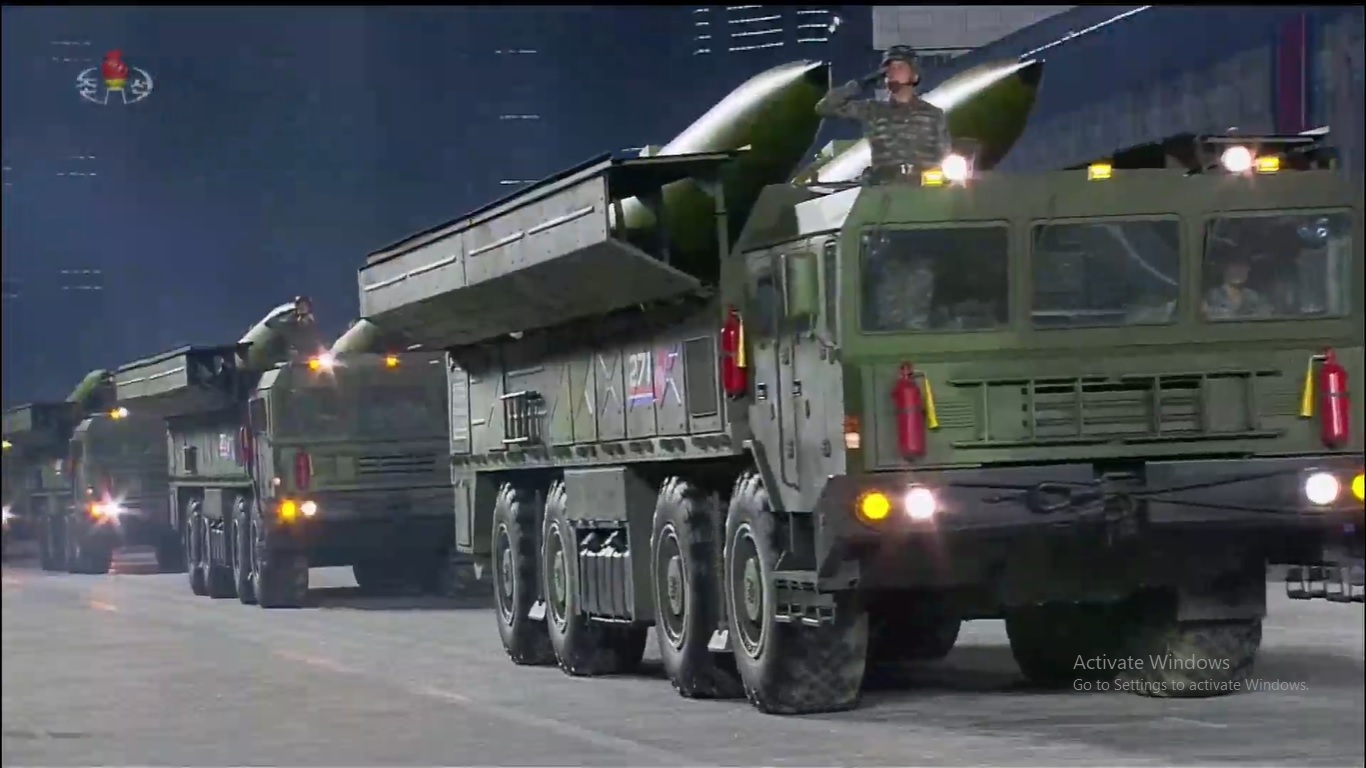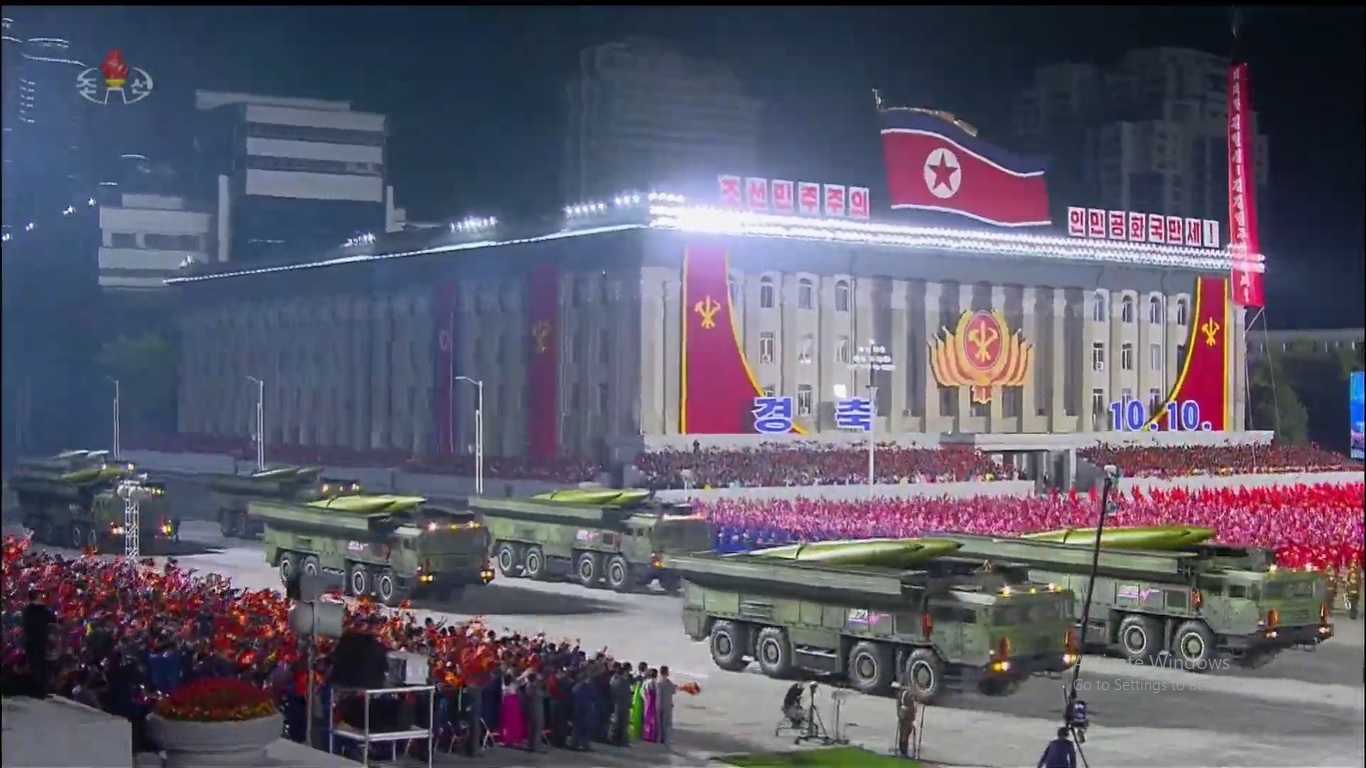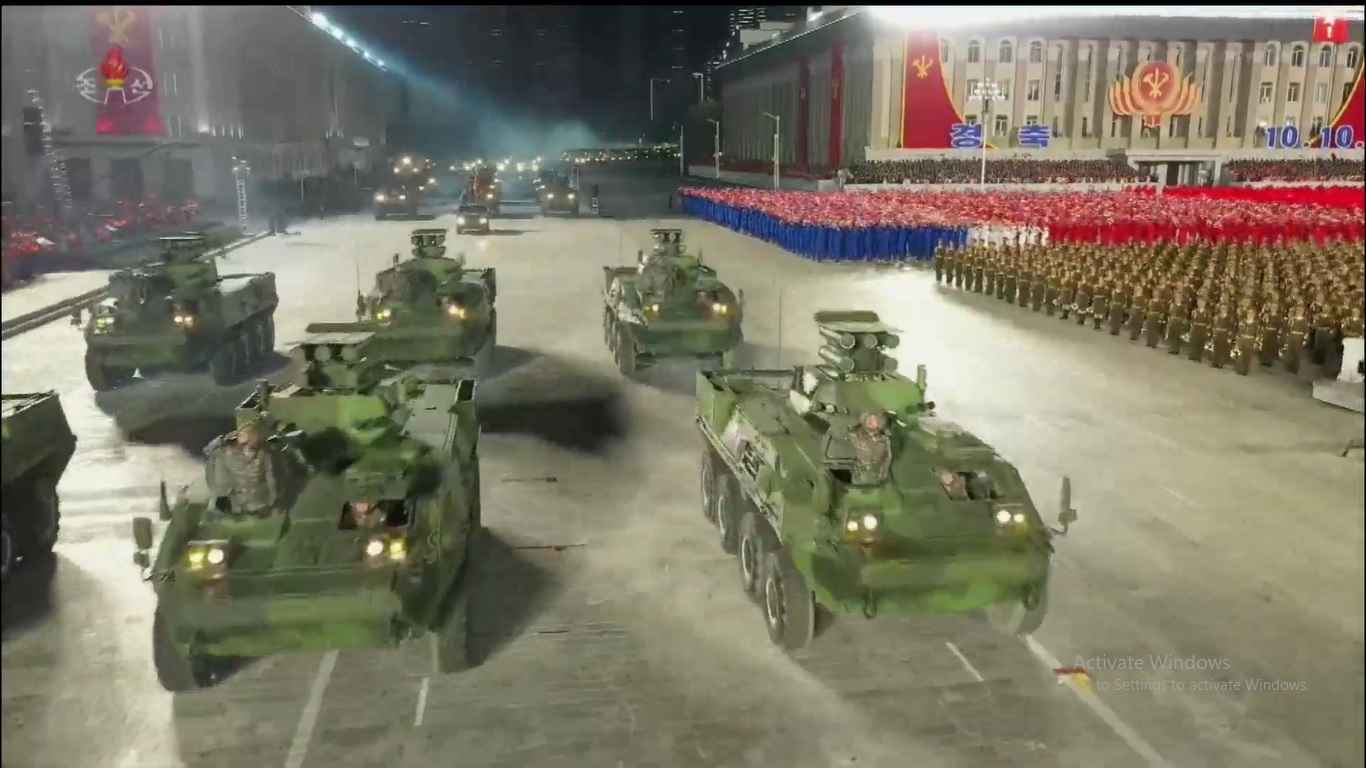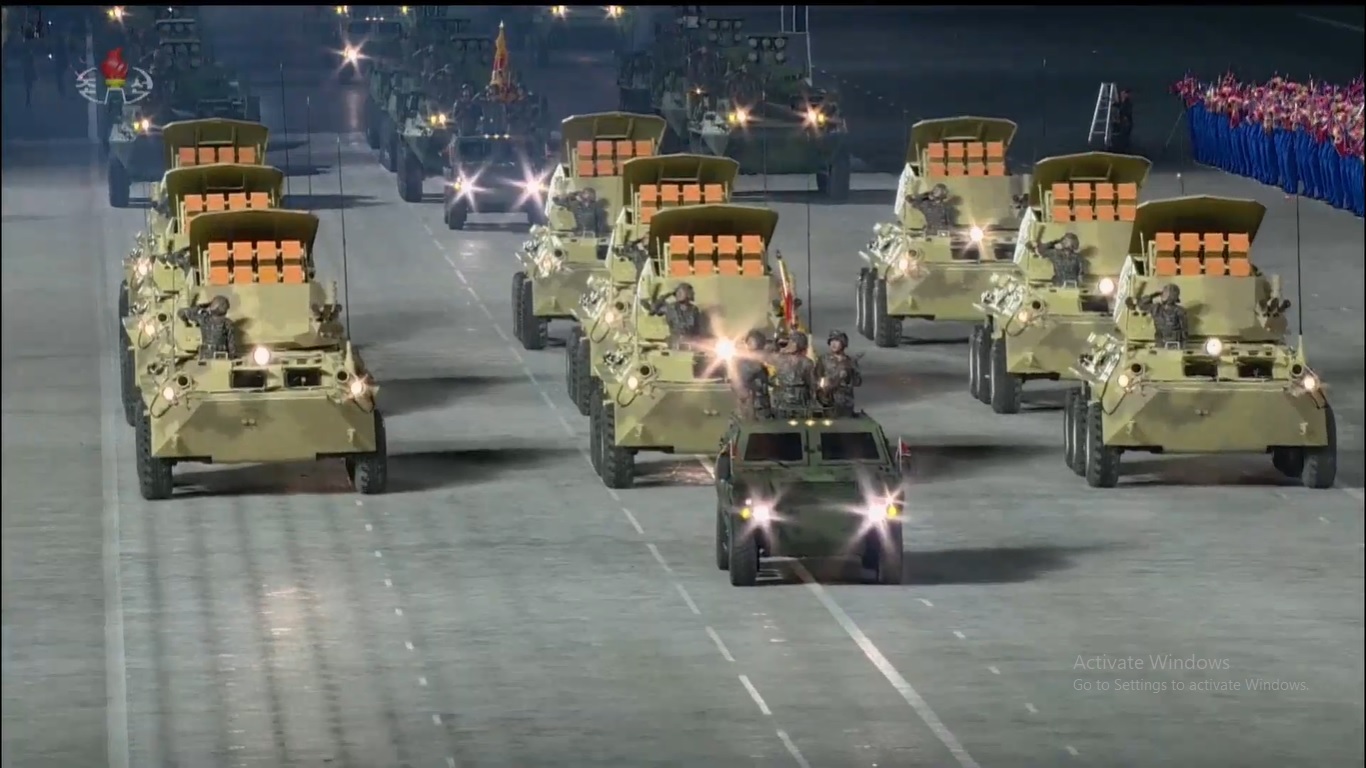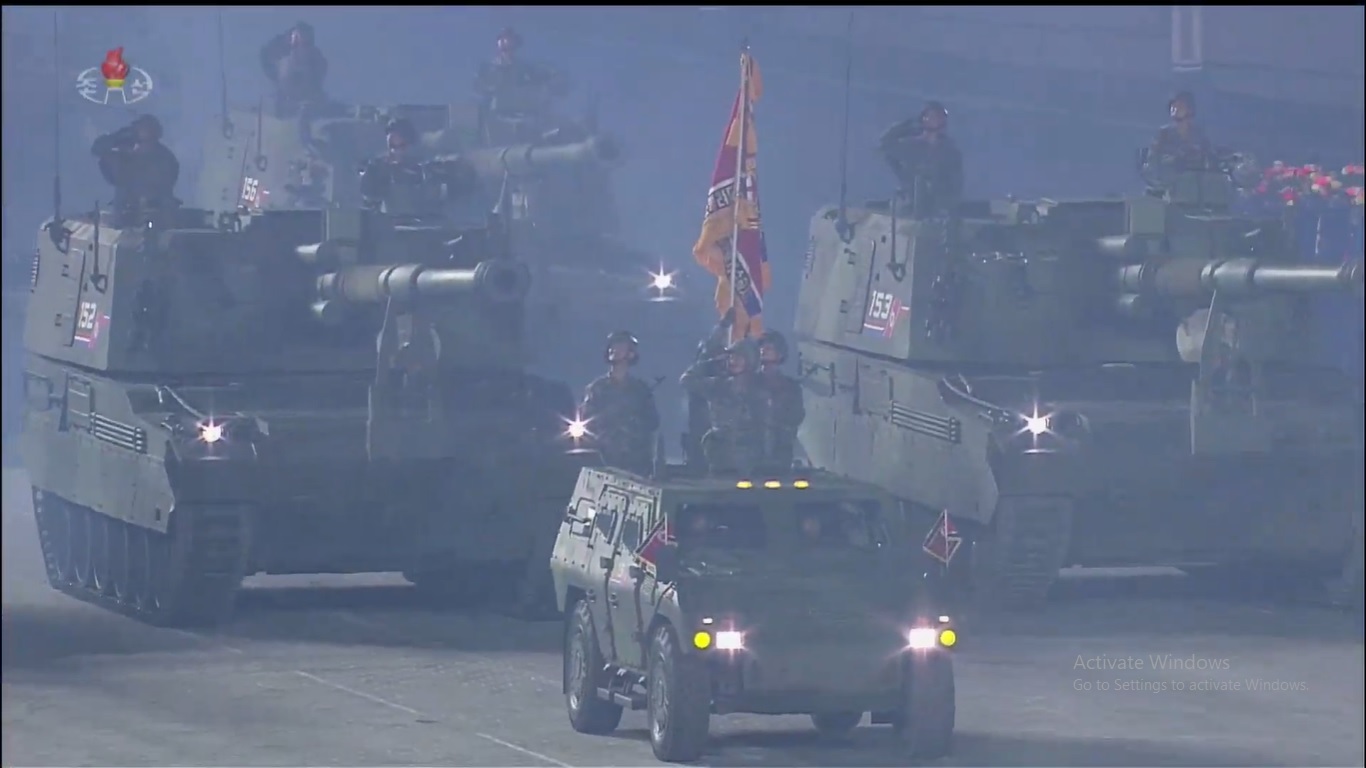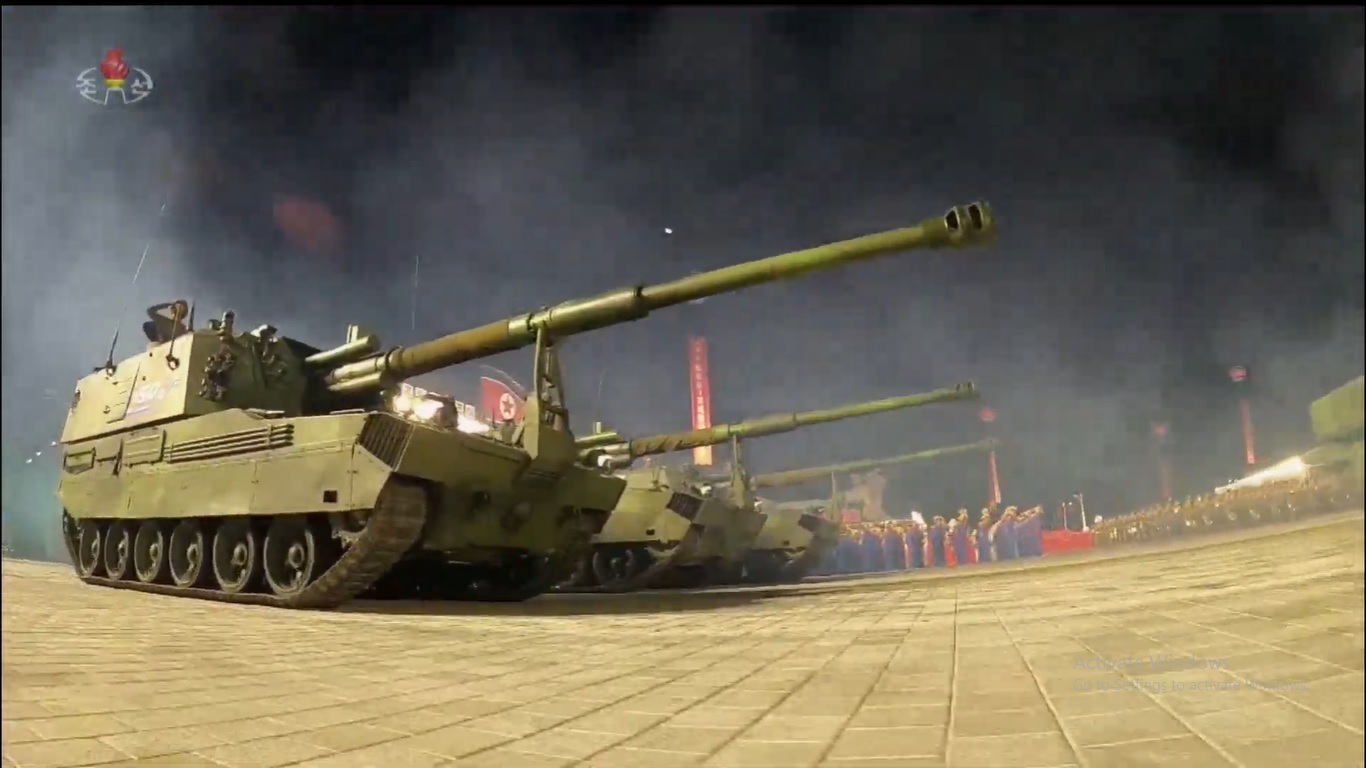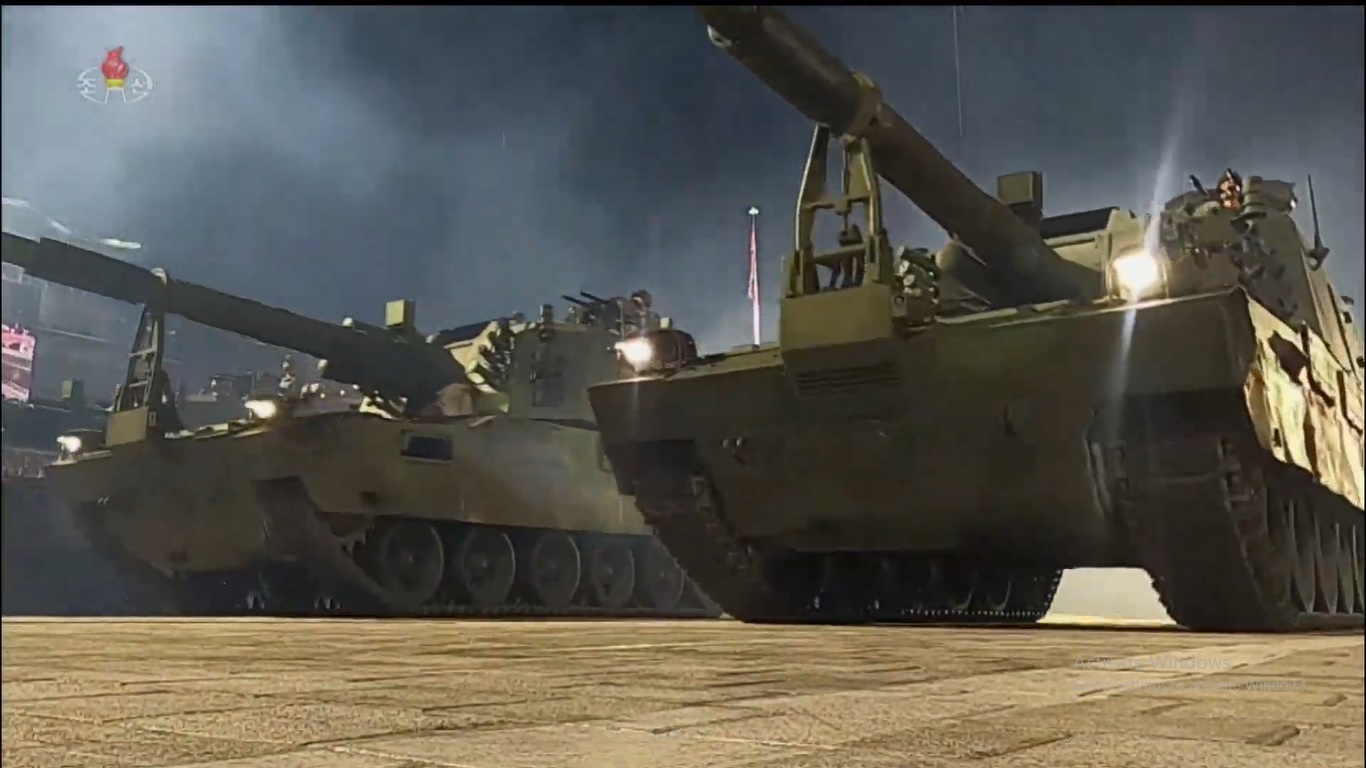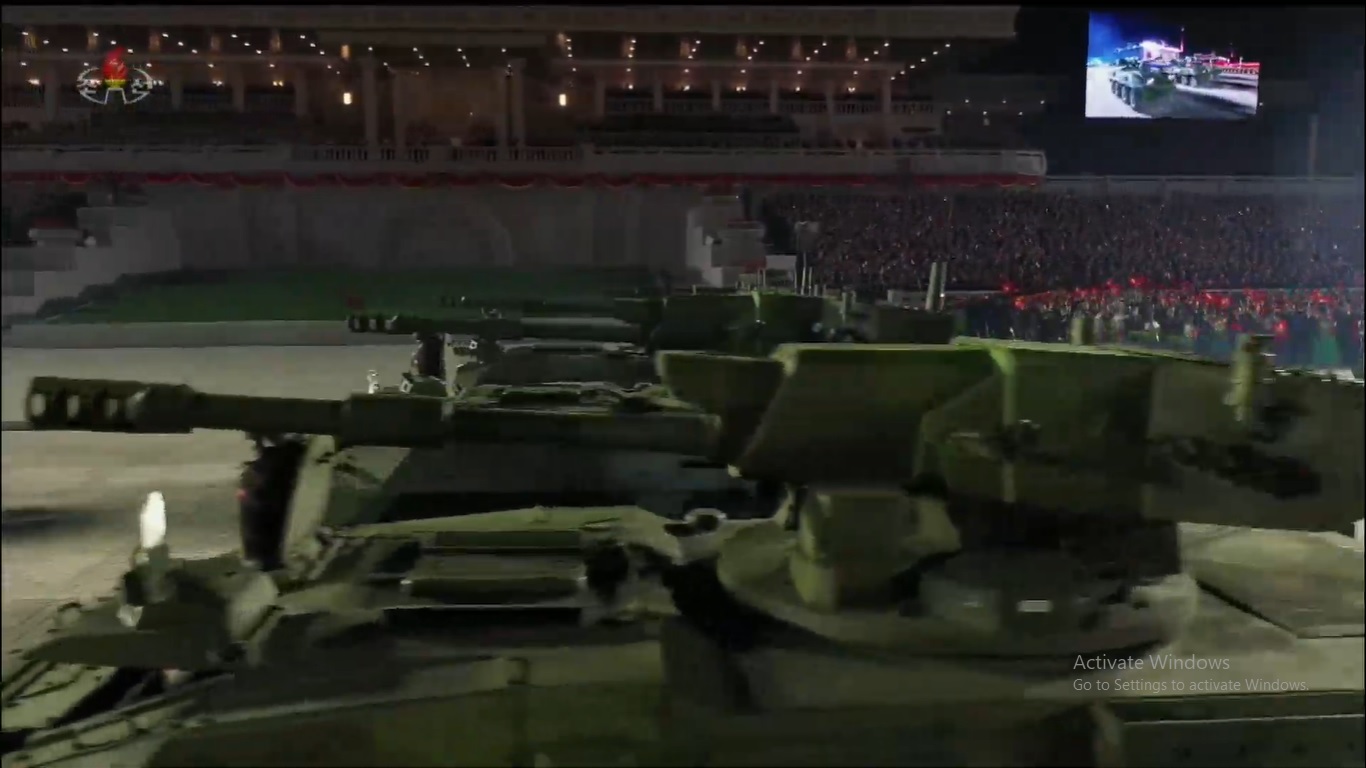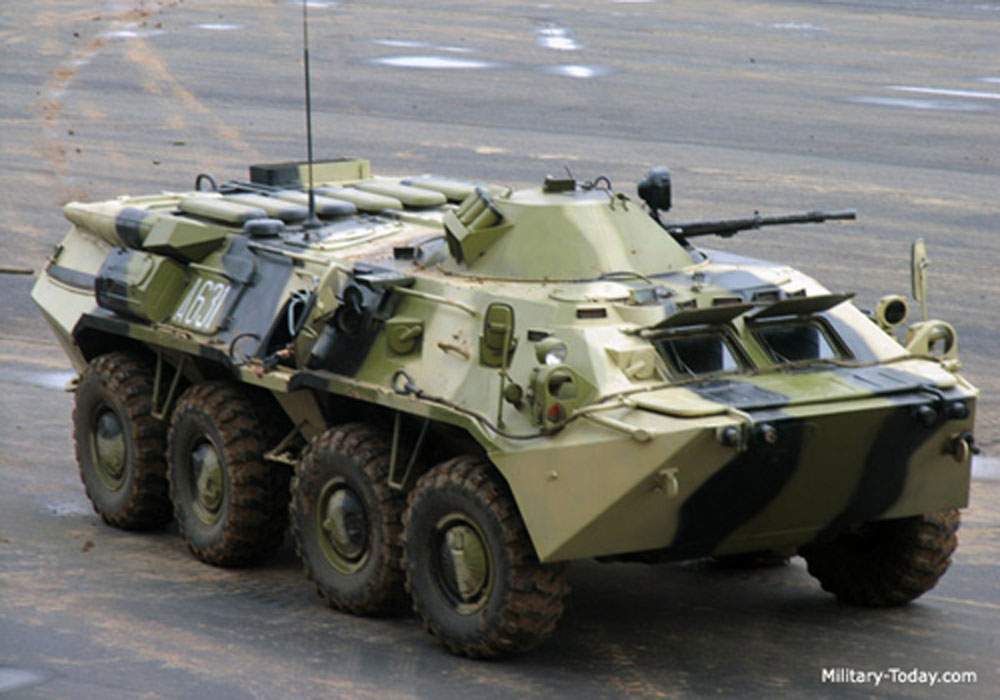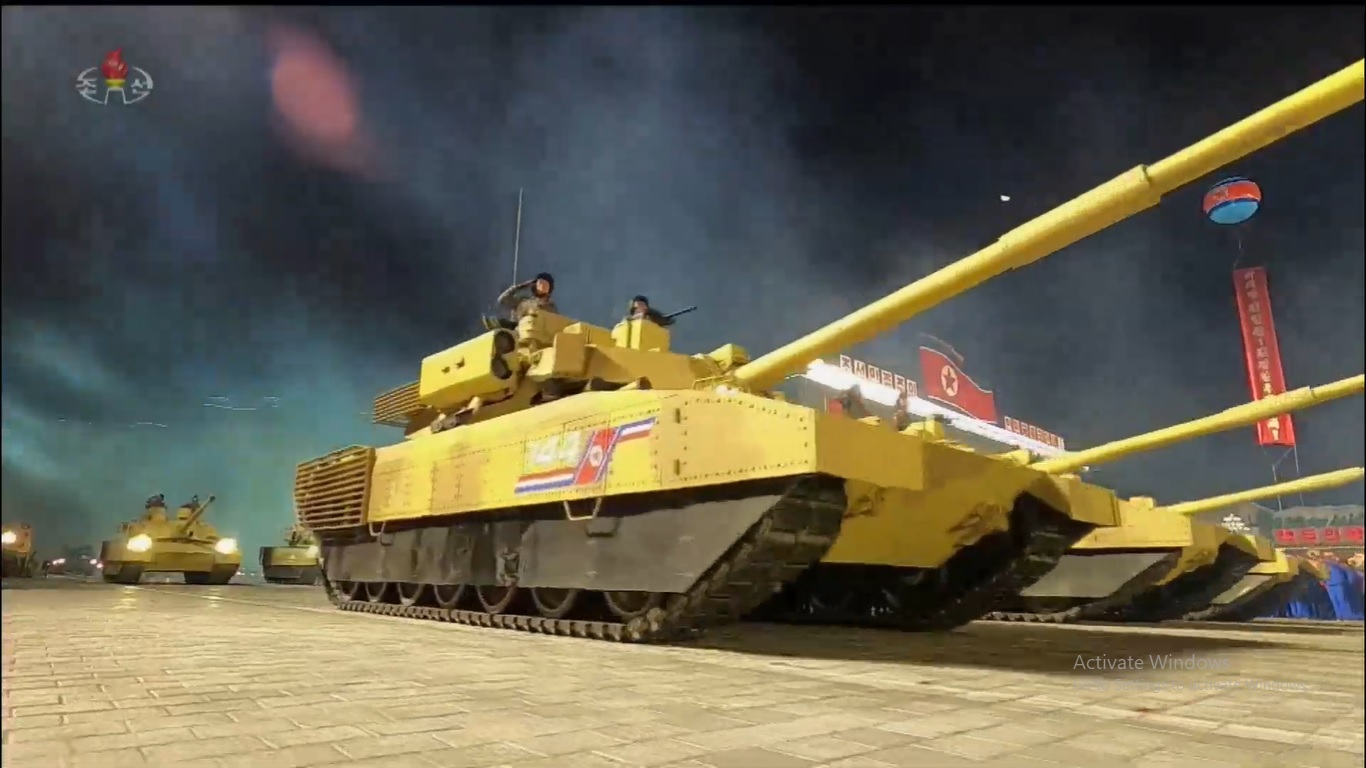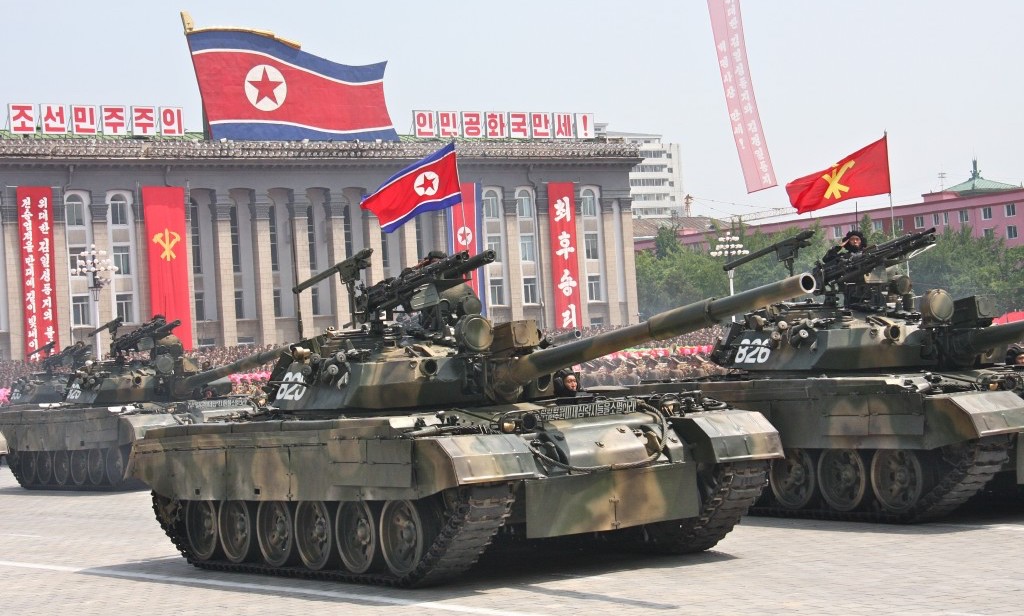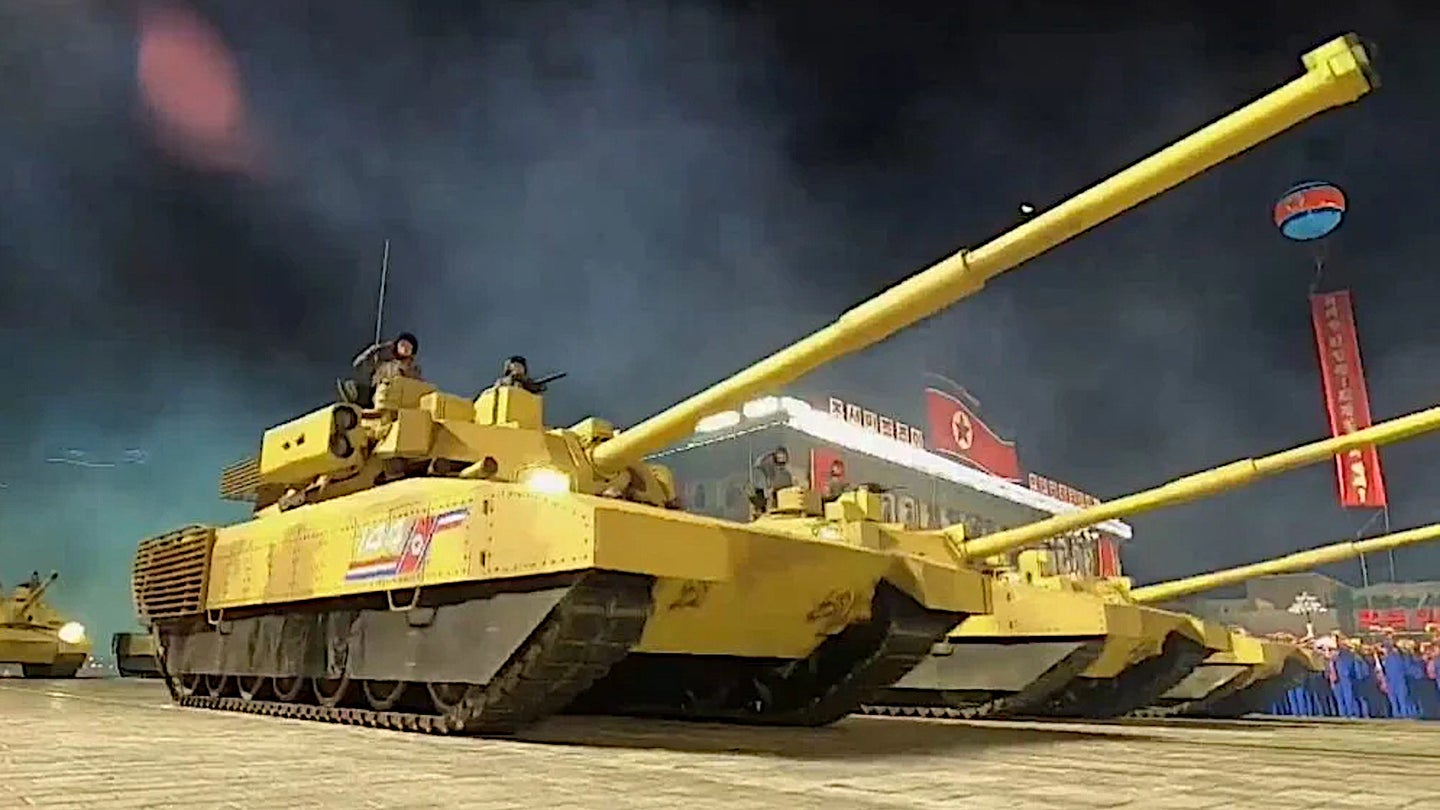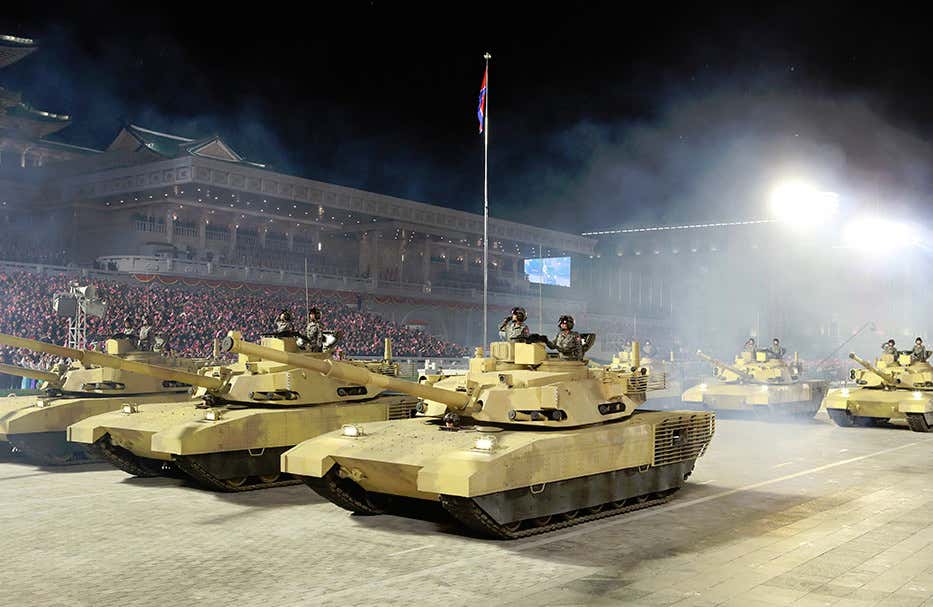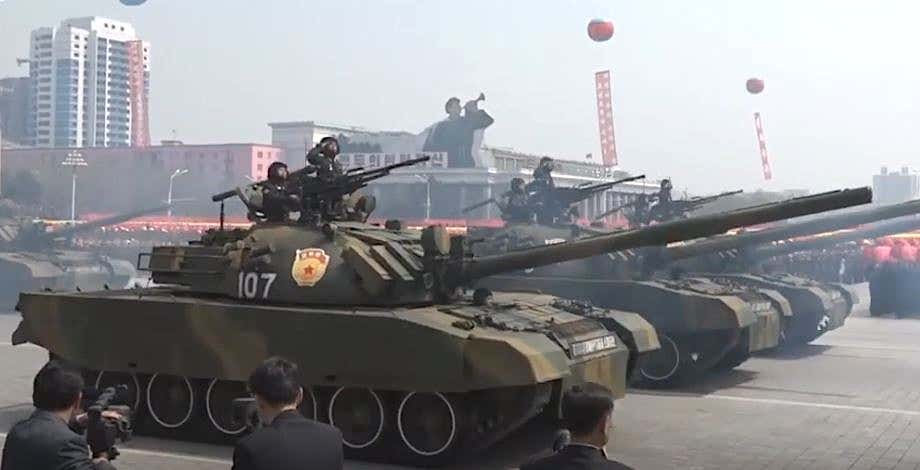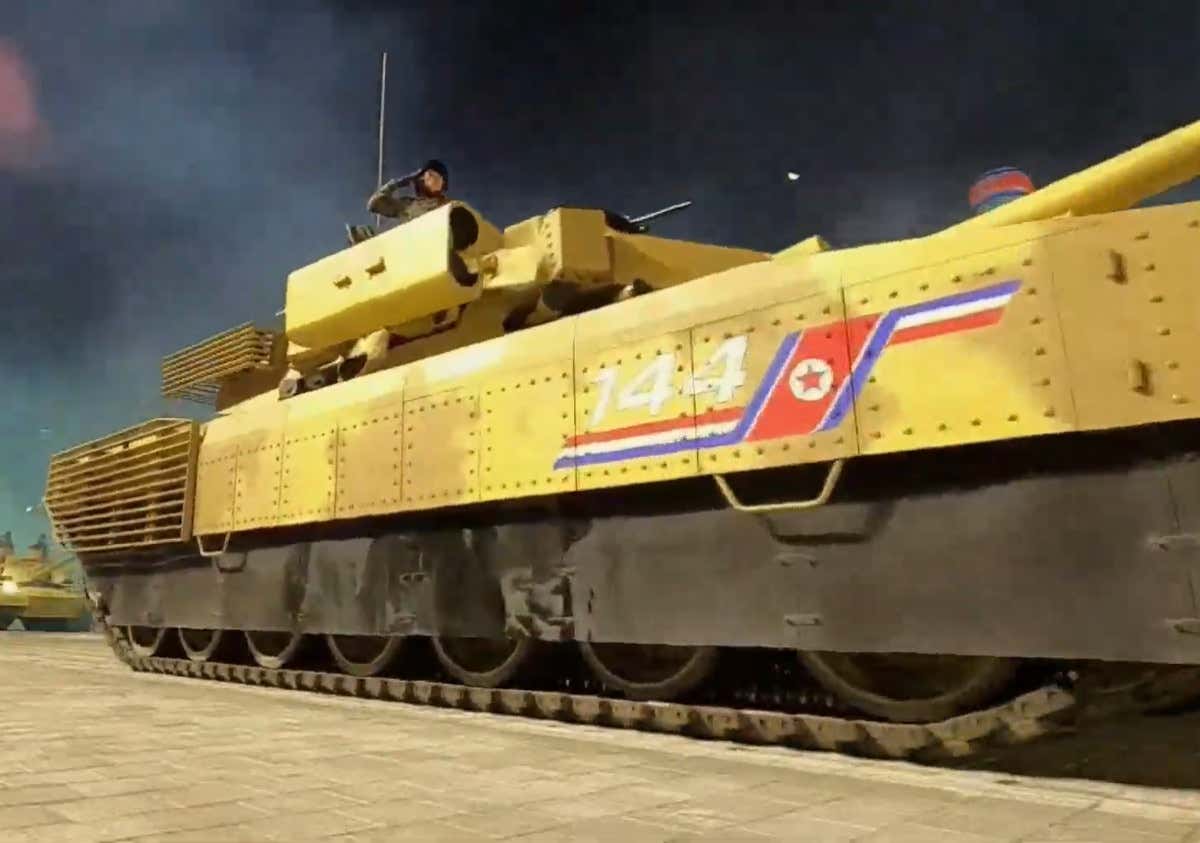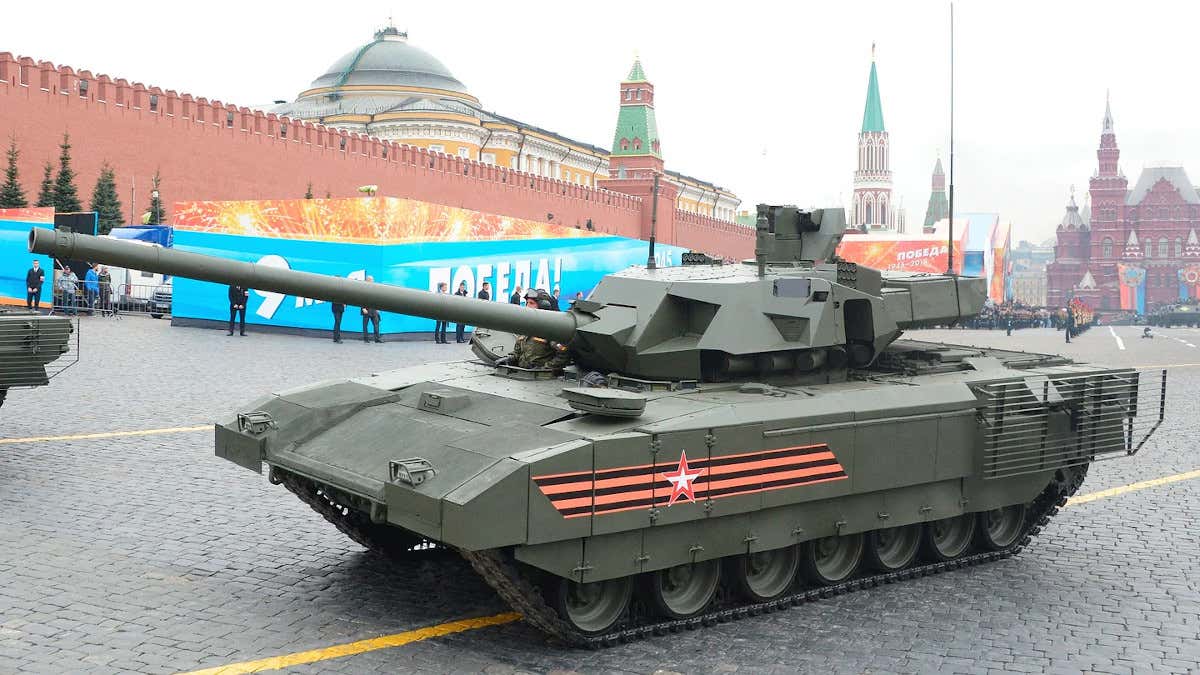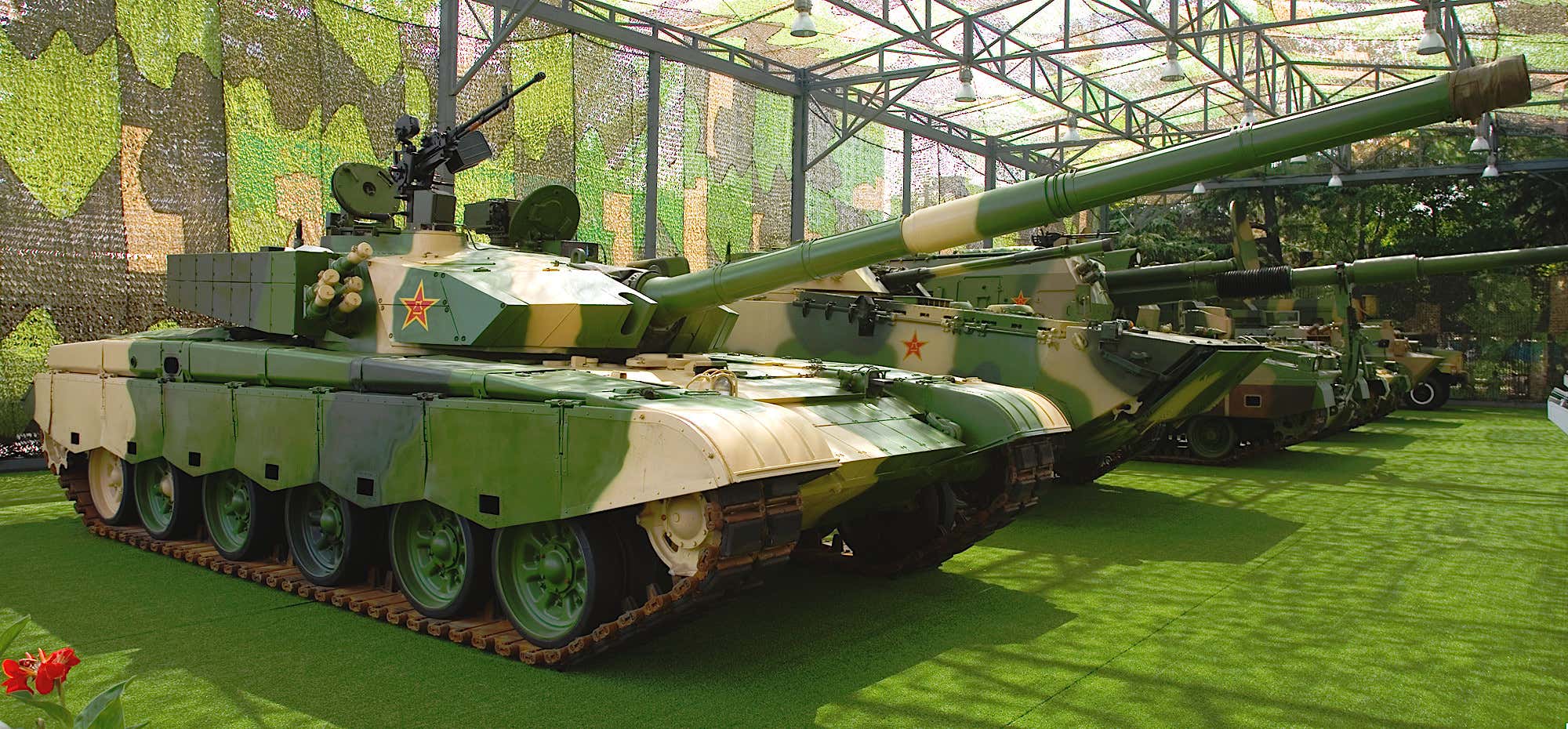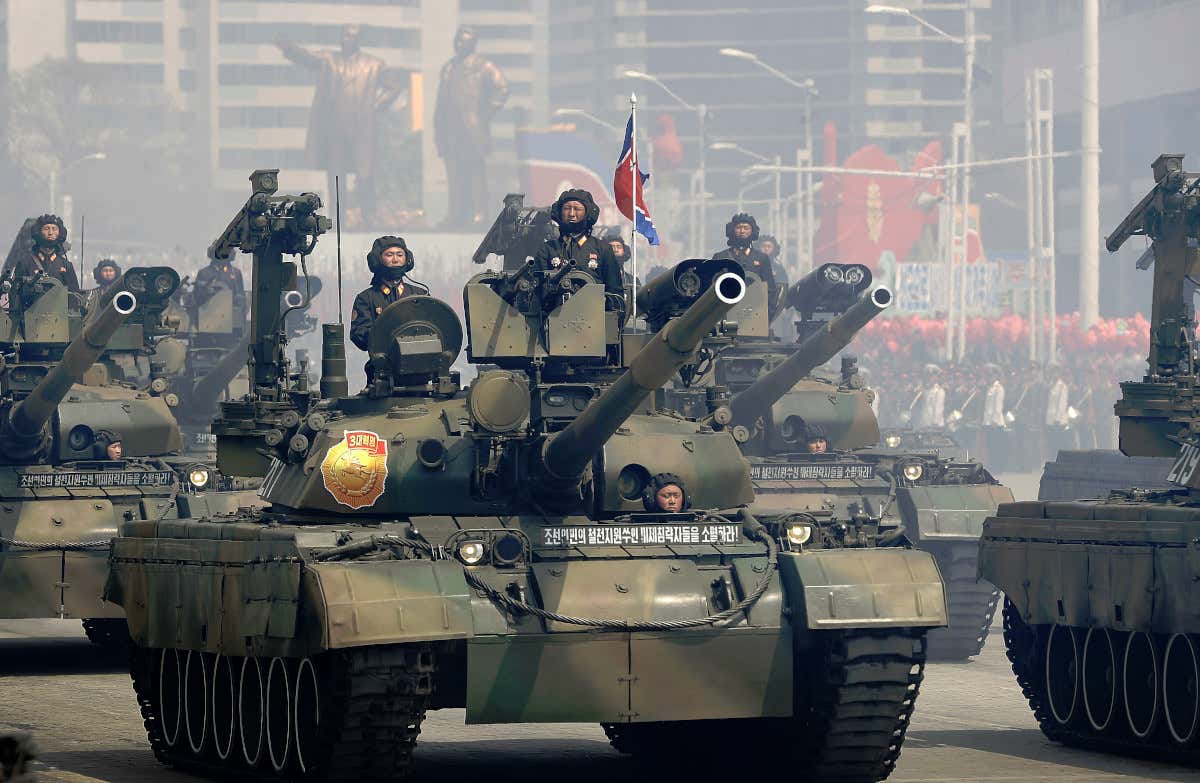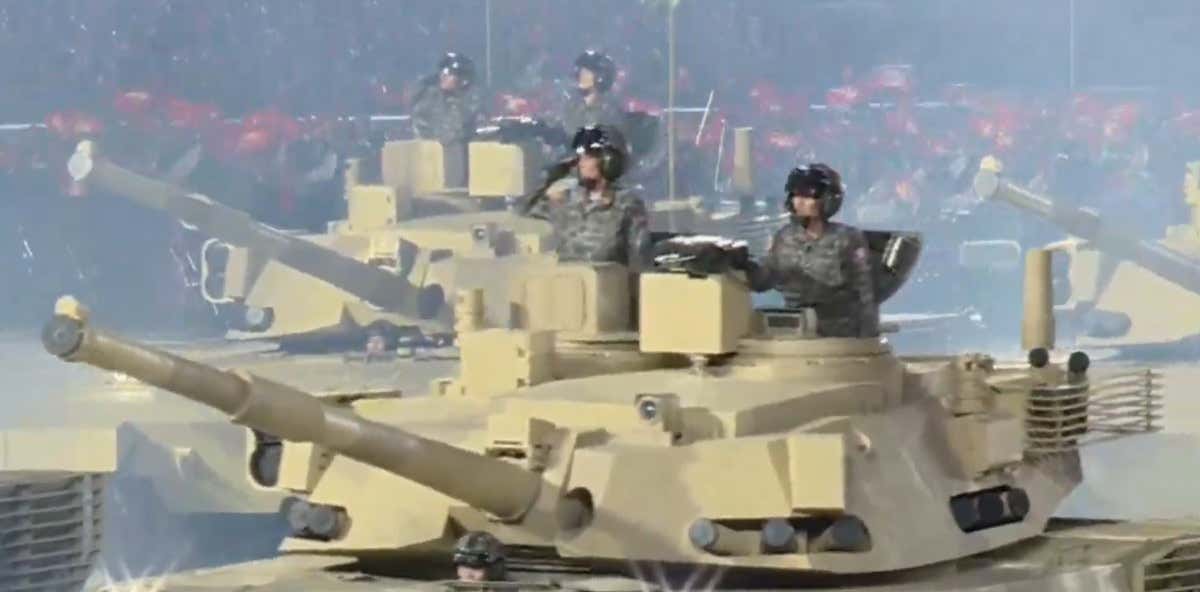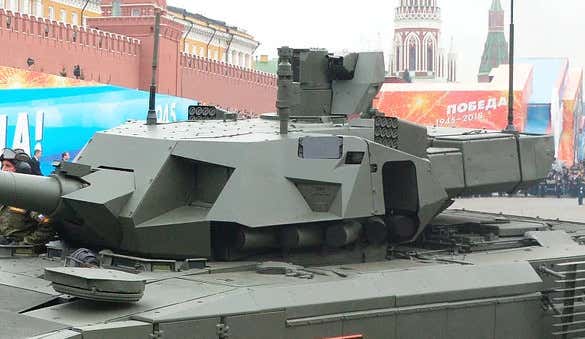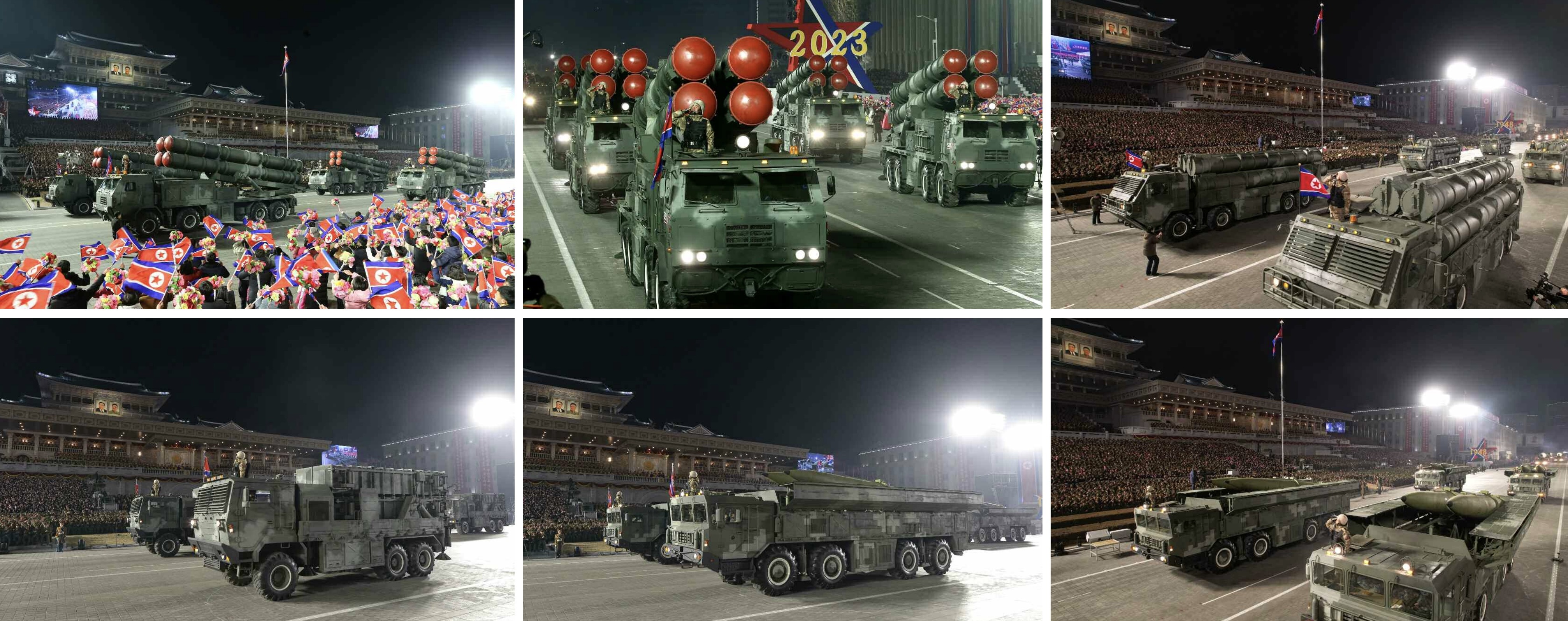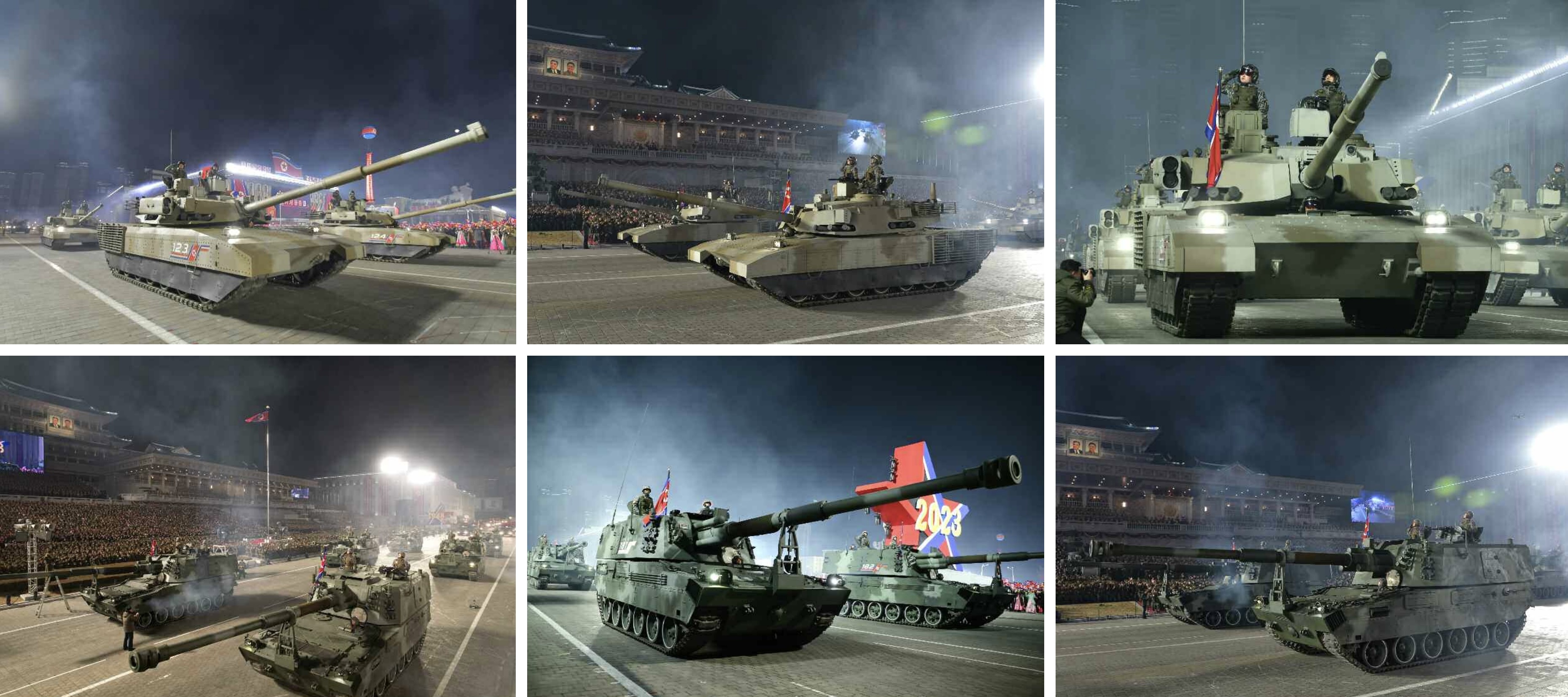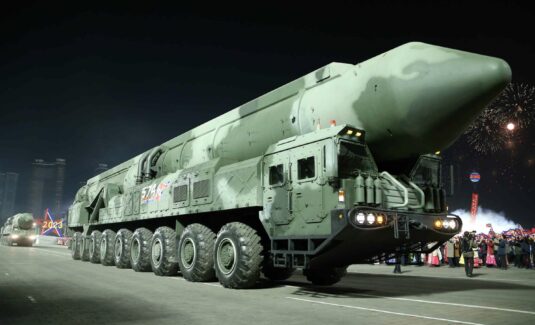‘Large crowds and equipment’ mobilised for parade at Pyongyang’s Kim Il-sung Square
Associated Press in Seoul
Sat 10 Oct 2020 12.45 BST
Shares
7

A screen grab taken from a KCNA broadcast shows the North Korean leader, Kim Jong-un, delivering a speech before the military parade. Photograph: KCNA VIA KNS/AFP/Getty Images
The North Korean leader, Kim Jong-un, took centre stage at a massive military parade and public rally in Pyongyang early on Saturday marking the 75th anniversary of the country’s ruling party.
Outside observers were expecting the country to possibly unveil the latest weapons in its growing nuclear arsenal that threatens US allies in Asia and the American mainland.
South Korea’s joint chiefs of staff said early in the day that there were signs that “large crowds and equipment” had been mobilised for a military parade at Pyongyang’s Kim Il-sung Square during the early morning hours. In the evening, North Korean state television began airing a taped broadcast of the event, which began late on Friday.
Advertisement
Goose-stepping troops were seen marching in the streets in front of the brightly illuminated square, as a military band performed while moving in formation, shaping the numbers “10.10”, “1945,” and “2020”, as well as a hammer and sickle — symbols of the ruling Workers’ party.
The performers and tens of thousands of spectators roared as Kim appeared from a building as the clock struck midnight. Kim, flanked with senior officials and smiling widely, waved to the crowd and kissed children who presented him with flowers before taking his spot on the podium.
Earlier on Saturday, masked citizens lined up to lay flowers at the statues of Kim Il-sung and Kim Jong-il, the father of the current ruler, at Pyongyang’s Mansu Hill. A huge street poster highlighted the ruling Workers’ party’s symbol with letters that read: “Best glory to our great party.”
The country’s official Korean Central News Agency said residents in Kaesong and other regions who had lost their homes to recent natural disasters marked the party anniversary by moving into newly built houses and that they praised Kim Jong-un for looking after them as “their father”.
KCNA also reported that the Chinese president, Xi Jinping, sent a letter to Kim saying that Beijing would continue to “defend, consolidate and develop” bilateral relations with Pyongyang.
This year’s anniversary comes amid deadlocked nuclear negotiations with the Trump administration and deepening economic woes that analysts say are shaping up as one of the biggest tests of Kim’s leadership since he took power in 2011.
South Korean officials and analysts have said North Korea could showcase a new intercontinental ballistic missile or other nuclear-capable weapons during a parade, which would highlight how the country has continued to expand its military capabilities amid stalled nuclear talks.
Kim pledged in December to soon unveil a “new strategic weapon to the world” while declaring to bolster his nuclear deterrent in face of “gangster-like” US pressure.
But while he may put on a huge display of his military hardware for the anniversary, analysts say Kim is likely to avoid direct or harsh criticism towards Washington during his speech at the event and instead focus on a domestic message of unity in the face of economic hardship.
Many analysts believe North Korea will avoid serious negotiations or provocations before the US presidential election in November, as a change in US administrations could force the country to recalibrate its approach toward Washington and Seoul.

 www.theguardian.com
www.theguardian.com
Associated Press in Seoul
Sat 10 Oct 2020 12.45 BST
Shares
7

A screen grab taken from a KCNA broadcast shows the North Korean leader, Kim Jong-un, delivering a speech before the military parade. Photograph: KCNA VIA KNS/AFP/Getty Images
The North Korean leader, Kim Jong-un, took centre stage at a massive military parade and public rally in Pyongyang early on Saturday marking the 75th anniversary of the country’s ruling party.
Outside observers were expecting the country to possibly unveil the latest weapons in its growing nuclear arsenal that threatens US allies in Asia and the American mainland.
South Korea’s joint chiefs of staff said early in the day that there were signs that “large crowds and equipment” had been mobilised for a military parade at Pyongyang’s Kim Il-sung Square during the early morning hours. In the evening, North Korean state television began airing a taped broadcast of the event, which began late on Friday.
Advertisement
Goose-stepping troops were seen marching in the streets in front of the brightly illuminated square, as a military band performed while moving in formation, shaping the numbers “10.10”, “1945,” and “2020”, as well as a hammer and sickle — symbols of the ruling Workers’ party.
The performers and tens of thousands of spectators roared as Kim appeared from a building as the clock struck midnight. Kim, flanked with senior officials and smiling widely, waved to the crowd and kissed children who presented him with flowers before taking his spot on the podium.
Earlier on Saturday, masked citizens lined up to lay flowers at the statues of Kim Il-sung and Kim Jong-il, the father of the current ruler, at Pyongyang’s Mansu Hill. A huge street poster highlighted the ruling Workers’ party’s symbol with letters that read: “Best glory to our great party.”
The country’s official Korean Central News Agency said residents in Kaesong and other regions who had lost their homes to recent natural disasters marked the party anniversary by moving into newly built houses and that they praised Kim Jong-un for looking after them as “their father”.
KCNA also reported that the Chinese president, Xi Jinping, sent a letter to Kim saying that Beijing would continue to “defend, consolidate and develop” bilateral relations with Pyongyang.
This year’s anniversary comes amid deadlocked nuclear negotiations with the Trump administration and deepening economic woes that analysts say are shaping up as one of the biggest tests of Kim’s leadership since he took power in 2011.
South Korean officials and analysts have said North Korea could showcase a new intercontinental ballistic missile or other nuclear-capable weapons during a parade, which would highlight how the country has continued to expand its military capabilities amid stalled nuclear talks.
Kim pledged in December to soon unveil a “new strategic weapon to the world” while declaring to bolster his nuclear deterrent in face of “gangster-like” US pressure.
But while he may put on a huge display of his military hardware for the anniversary, analysts say Kim is likely to avoid direct or harsh criticism towards Washington during his speech at the event and instead focus on a domestic message of unity in the face of economic hardship.
Many analysts believe North Korea will avoid serious negotiations or provocations before the US presidential election in November, as a change in US administrations could force the country to recalibrate its approach toward Washington and Seoul.

North Korea: military parade marks ruling party's 75th anniversary
Kim Jong-un tells crowds the country will ‘fully mobilise’ its nuclear force if threatened


